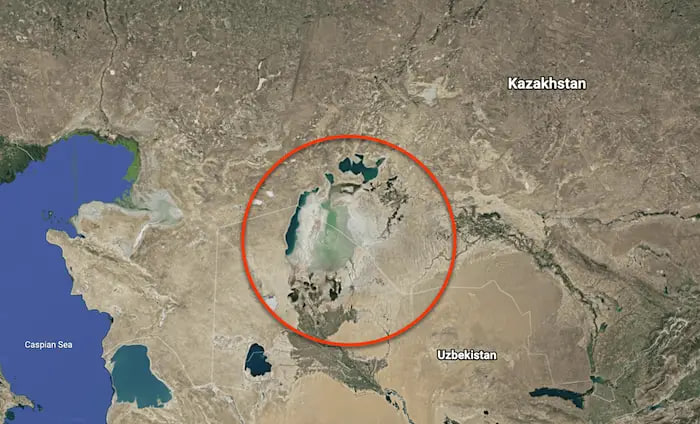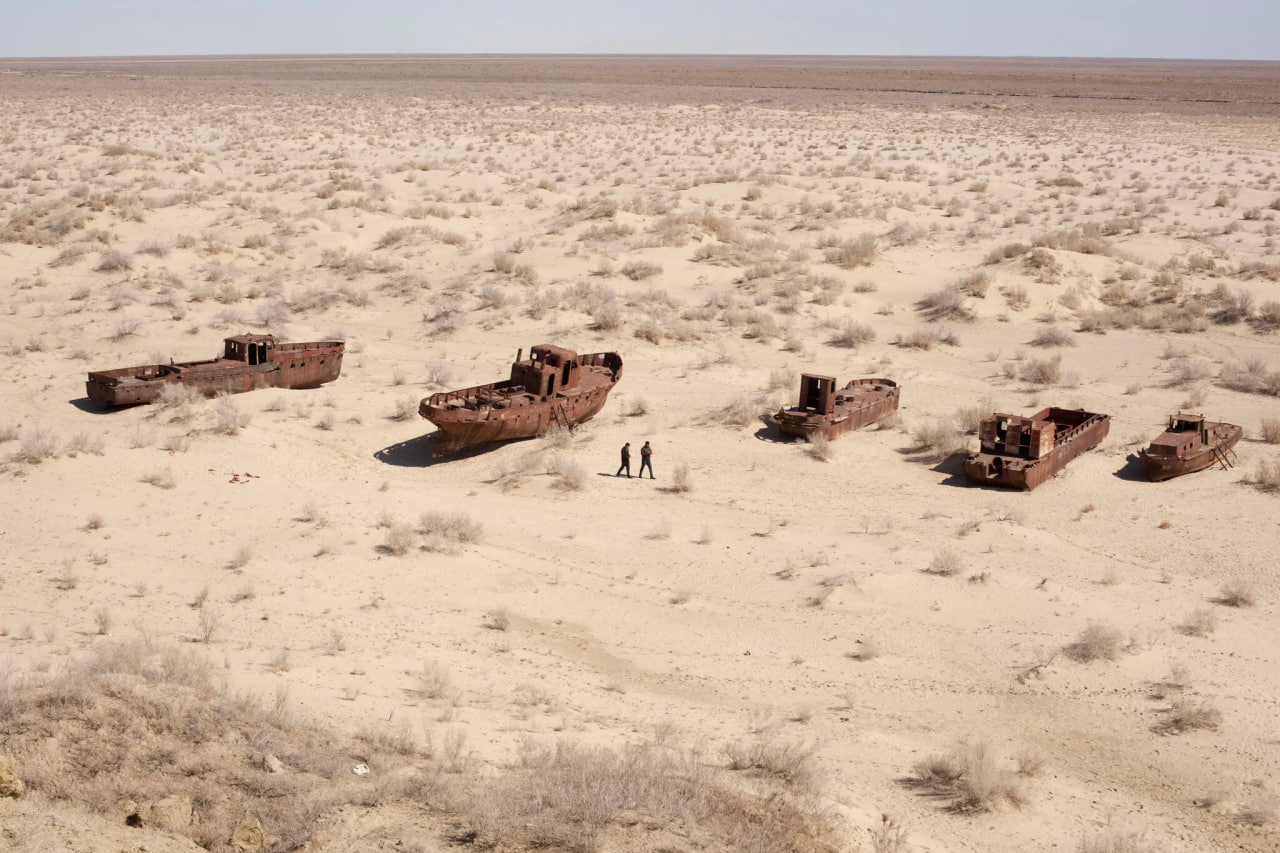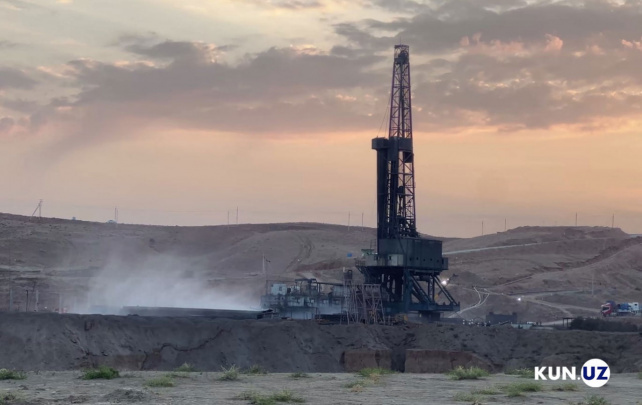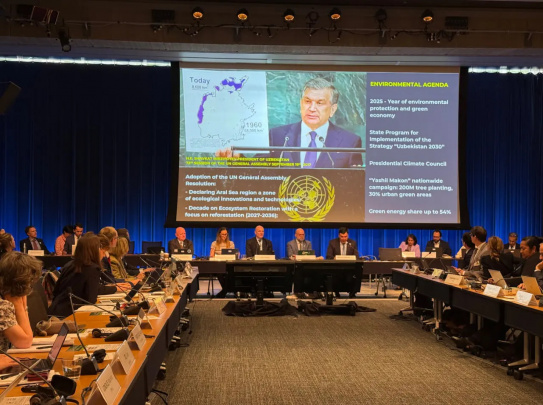Aral Sea tragedy: Causes, impacts, and possible solutions
The Aral Sea, once the fourth-largest inland body of water in the world, has become one of the most striking examples of ecological devastation. Straddling the border between Kazakhstan and Uzbekistan, the sea has suffered severe depletion over the past six decades, leading to profound environmental, economic, and health impacts on the surrounding regions. This article explores the background of the Aral Sea disaster, its causes, and the multifaceted consequences that have ensued, as well as possible solutions to mitigate its impacts.

The Aral Sea, formerly an expansive inland lake covering 68,000 square kilometers, began to shrink dramatically in the 1960s. This decline was primarily due to the diversion of the two rivers that fed it—the Amu Darya and the Syr Darya—for large-scale irrigation projects. The Soviet government undertook these diversions to boost cotton production, a crop demanding significant water resources. As water flow into the Aral Sea decreased, its volume diminished rapidly, leading to severe ecological and socioeconomic consequences.
Reasons for the Disaster
Irrigation Projects: The primary driver of the Aral Sea's decline was the extensive irrigation infrastructure developed to support agriculture, particularly cotton cultivation. The construction of canals, dams, and reservoirs diverted substantial amounts of water from the Amu Darya and Syr Darya rivers, which previously replenished the Aral Sea. These diversions significantly reduced the inflow of freshwater, causing the sea to shrink.
Poor Water Management: Inefficient and wasteful irrigation practices exacerbated the problem. Much of the water diverted for agriculture was lost due to leakage, evaporation, and poor canal maintenance. The mismanagement of water resources not only reduced the volume of water reaching the Aral Sea but also led to soil salinization and degradation in agricultural areas.
Climatic Factors: While human activity was the main cause, natural climatic variations also contributed to the disaster. The region experienced periods of drought, which further decreased river flows and compounded the effects of water diversion.
Environmental Impacts
Desiccation of the Sea: The most visible impact of the ecological disaster is the dramatic shrinkage of the Aral Sea. By 2007, the sea had lost about 90% of its original volume, splitting into several smaller, highly saline bodies of water. The exposed seabed, now a vast desert known as the Aralkum Desert, spans tens of thousands of square kilometers.

Loss of Biodiversity: The decline of the Aral Sea has led to the extinction of numerous aquatic species. The once-thriving fishing industry has collapsed, and many native fish species have disappeared. The loss of biodiversity extends to terrestrial ecosystems as well, as the drying sea has altered local climate patterns and habitats.
Desertification and Dust Storms: The exposed seabed, laden with salt and toxic chemicals from agricultural runoff, has become a major source of dust storms. These storms transport harmful substances over vast distances, contaminating soil and water, and affecting the health of people and animals far beyond the immediate region.
Economic Impacts
Collapse of Fisheries: The fishing industry, which once provided livelihoods for thousands of people, has been decimated. With the disappearance of fish populations, many communities that depended on fishing have experienced severe economic hardship and unemployment.
Agricultural Decline: While irrigation initially boosted agricultural production, the long-term consequences have been detrimental. Soil salinization and degradation, resulting from poor irrigation practices, have reduced the productivity of farmlands. This has led to declining agricultural yields and income for farmers.
Loss of Livelihoods: The combined effects of the collapse of fisheries and agricultural decline have devastated local economies. Many people have been forced to migrate in search of better opportunities, leading to depopulation and the erosion of traditional ways of life.
Health Impacts
Respiratory and Other Diseases: The dust storms originating from the Aralkum Desert carry toxic particles that pose significant health risks. Respiratory diseases, such as bronchitis and asthma, have become more prevalent in the region. The dust also contains pesticides and other harmful chemicals, contributing to higher rates of cancer and other illnesses.
Water Contamination: The diversion of river water for irrigation has reduced the availability of fresh water for drinking and sanitation. The remaining water sources are often polluted with agricultural runoff, leading to waterborne diseases and other health problems.
Malnutrition: The collapse of the fishing industry and declining agricultural productivity have reduced food availability and diversity. Malnutrition, particularly among children, has become a serious issue, impacting physical and cognitive development.
Possible Solutions
- Water Management Reforms: Improving water management practices is crucial for mitigating the disaster's impacts. This includes repairing and maintaining irrigation infrastructure to reduce water loss, adopting more efficient irrigation techniques, and promoting crop varieties that require less water.
- Restoration Projects: Efforts to restore parts of the Aral Sea, such as the construction of the Kok-Aral Dam in Kazakhstan, have shown some success. These projects aim to stabilize water levels and create conditions for the revival of local ecosystems and fisheries.
- Sustainable Agriculture: Transitioning to sustainable agricultural practices can help address soil salinization and degradation. Techniques such as crop rotation, conservation tillage, and the use of organic fertilizers can improve soil health and productivity without relying heavily on irrigation.
- Economic Diversification: Diversifying the local economy beyond agriculture and fisheries is essential for building resilience. Developing alternative industries, such as tourism, renewable energy, and small-scale manufacturing, can provide new employment opportunities and reduce dependency on vulnerable sectors.
- Public Health Interventions: Addressing the health impacts requires a multifaceted approach, including improving healthcare infrastructure, ensuring access to clean water and sanitation, and implementing public health campaigns to raise awareness about the risks of dust storms and water contamination.
- International Cooperation: The Aral Sea disaster is a regional issue that requires coordinated efforts from all affected countries. International cooperation can facilitate the sharing of resources, knowledge, and technologies needed to implement effective solutions.
The ecological disaster of the Aral Sea represents a stark reminder of the consequences of unsustainable environmental practices. The extensive environmental degradation, economic hardships, and severe health issues faced by the region's inhabitants highlight the urgent need for comprehensive and coordinated action. While the challenges are immense, a combination of improved water management, ecological restoration, sustainable agriculture, economic diversification, and robust public health interventions can help mitigate the impacts and foster resilience. By learning from the past and implementing forward-thinking solutions, there is hope for a more sustainable future for the Aral Sea region.
Doniyor Tukhsinov
Recommended
List of streets and intersections being repaired in Tashkent published
SOCIETY | 19:12 / 16.05.2024
Uzbekistan's flag flies high on Oceania's tallest volcano
SOCIETY | 17:54 / 15.05.2024
New tariffs to be introduced in Tashkent public transport
SOCIETY | 14:55 / 05.05.2023
Onix and Tracker cars withdrawn from sale
BUSINESS | 10:20 / 05.05.2023
Latest news
-
Uzbekistan tops medal table at Asian Cadet Judo Cup in Kazakhstan
SPORT | 18:42 / 05.07.2025
-
Uncertainty grows as new homes remain without gas supply
SOCIETY | 17:46 / 05.07.2025
-
Uzbekistan plans to launch national ferry service in Caspian Sea
SOCIETY | 16:03 / 05.07.2025
-
Dozens of violations, zero accountability: Fergana police cancel fines for chief’s wife’s car
SOCIETY | 16:02 / 05.07.2025
Related News

13:11 / 01.07.2025
Authorities intensify environmental oversight as damage nears 1 trillion UZS in just 2.5 years

13:07 / 26.06.2025
Uzbekistan to launch pilot project for methane production from biogas

13:27 / 12.06.2025
Boysun gas leak poses no threat, says Ministry of Ecology

18:25 / 09.06.2025



